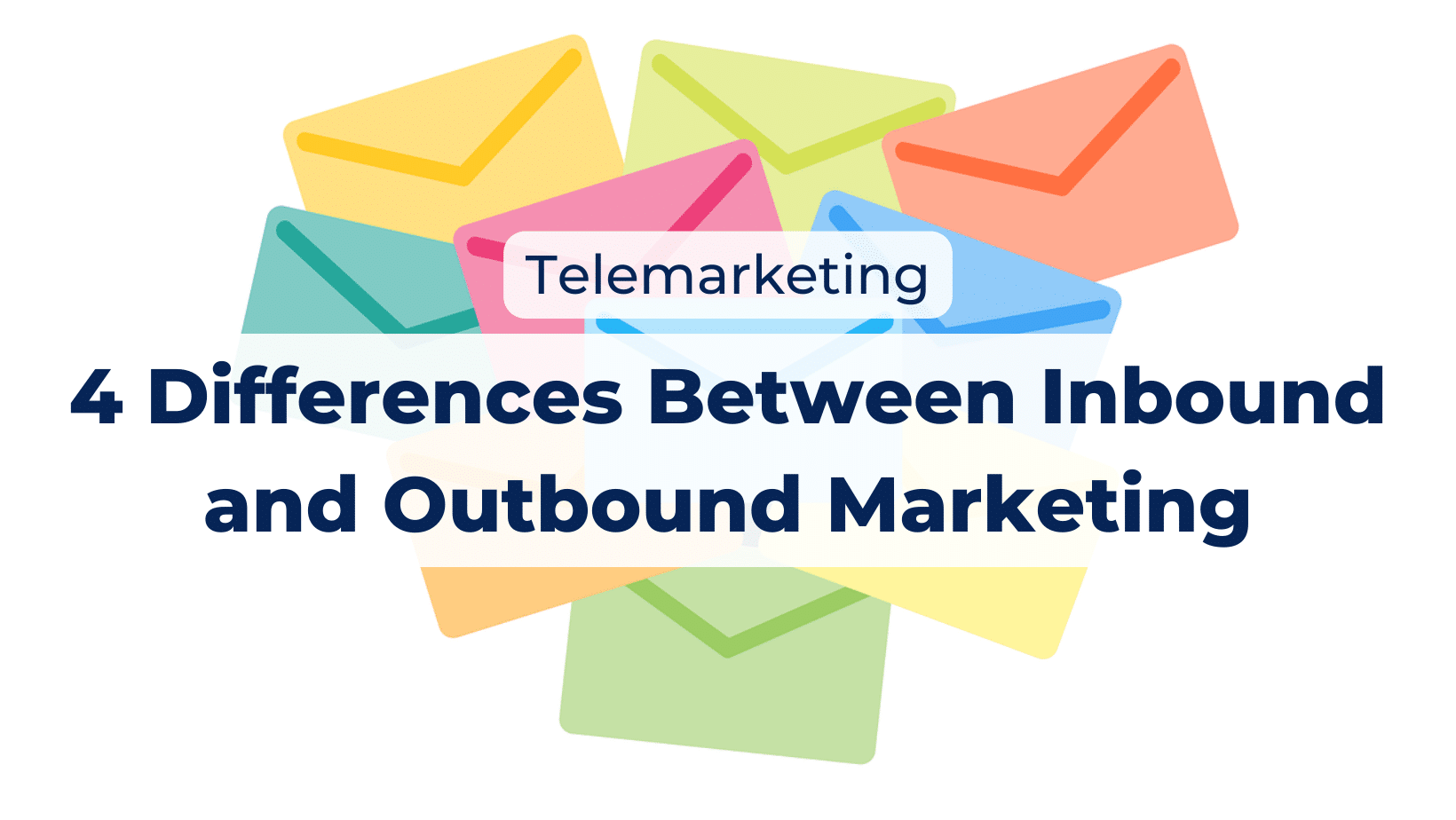Telemarketing: 4 Differences Between Inbound and Outbound Marketing
Even in 2023, B2B marketers still debate which method of marketing is the most effective: inbound, or outbound. Where your company lands on this debate will have a huge impact on how you distribute your budget. But before you make any such decisions, you first need to understand the key differences between both practices. There tend to be benefits to both, whether you’re reaching out to your audience directly via telemarketing, or you’re publishing engaging content in order to get your audience to come to you.
In today’s blog, we’ll be breaking down all the key differences between inbound and outbound marketing.

What is Inbound Marketing?
Inbound marketing is when you’re capturing prospective clients via more passive means than something like telemarketing. You’re creating and distributing content to draw attention to your website or social media pages. That’s why inbound marketing is often referred to as content marketing– they’re usually one in the same.
A typical inbound marketing strategy will aim to nurture prospective clients over time, at various stages throughout the sales funnel. The most effective way to nurture leads is by providing them with relevant, valuable content. This goes hand in hand with brand awareness. You’re gradually reeling them closer to the possibility of conversion, and then retention.

What is Outbound Marketing?
Outbound marketing, on the other hand, is when you’re contacting prospective customers directly, and initiating that contact. A common misconception is that outbound marketing is an outdated method; in reality, it can still be extremely effective in gathering leads. The key is to combine outbound marketing (such as telemarketing and email marketing) with inbound marketing (such as social media posts and blogs). After all, if you’re calling someone about your product or service, they’re a lot more likely to be receptive if they’re already aware of your brand.

Blogs and Other Examples of Inbound Marketing
There are quite a few examples of inbound marketing. Let’s look at the most common ones:
- Blog posts. Search engine optimization (SEO) is a key factor here, because no one’s really going to click your blogs if you’re not ranking highly for relevant keywords. Above all, though, the content must be valuable to your target audiences.
- Social media posts. This can be a great way to ramp up engagement with your customers. You can also experiment with paid social media ads, through channels like Facebook and LinkedIn.
- Long form downloadable content, like whitepapers and eBooks, are another way to provide leads with value. You can easily repurpose one of your existing blogs into a free download.
Telemarketing and Other Examples of Outbound Marketing
Telemarketing is the main example of outbound marketing, but there’s also cold emailing and events. Nurturing leads gradually is often the way to go, but with the right sales pitch, outbound can be the quickest way to generate interest in your product or service.

The Main Differences Between Inbound Marketing and Outbound Telemarketing
Outbound marketing like telemarketing is usually a more aggressive practice, with less personalised messaging and a wider scope. Inbound marketing, on the other hand, brings the customers to you, by targeting those customers specifically.
Let’s look at some of the other differences between inbound marketing and outbound marketing:
- Inbound marketing is centred around the customer, while outbound marketing is centred around the company’s brand, product, or services.
- Inbound marketing covers various stages in the lead nurturing funnel, while outbound marketing is one-way and direct.
- It tends to be easier to track engagement and interest through inbound marketing, rather than through outbound marketing. That’s one of the many reasons why your marketing strategy should consist of more than just cold telemarketing.
*
Building your business’s online presence takes time. Would you like a hand with that?
On top of our first class B2B telemarketing service, we also offer a wide range of B2B digital marketing services, including email marketing, social media marketing, search engine optimisation (SEO), copywriting, and much, much more. Head to our website to get in touch.

Ryan Whyte is the Senior Campaign Manager where he leads a team of B2B telemarketers to deliver high-quality leads for clients. With a strong background in campaign management and a focus on driving results, Ryan is dedicated to optimising strategies that maximise client success in B2B lead generation.



















